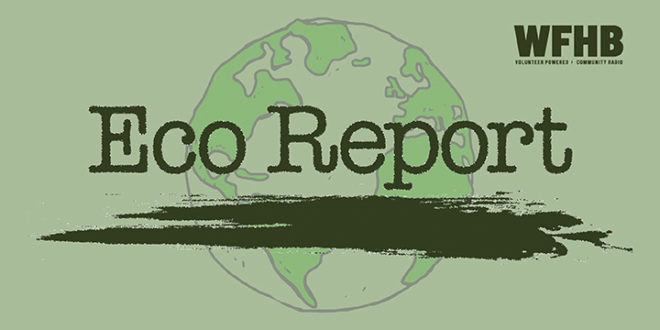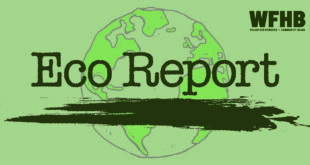|
And now for your environmental reports:
Now that we are at the end of the hottest summer ever recorded, what can we expect next year? It is possible to predict this because trends are not easily reversed. We should expect annual increases in atmospheric carbon dioxide because that happens every year. We should expect the forest fires in our West, Canada, and Russia to continue. The Canadian fires have consumed approximately 18 billion trees.
It is expected that next year we’ll still be experiencing El Nino, so we should expect more forest fires. Growing forests gobble up huge amounts of carbon dioxide. The tendency of storms to track over the same path is a consequence of global warming. The jet stream is slower and more wavy, and storms follow the waves. We should expect the same trend next year.
This past summer has been a disaster for the earth’s coral reefs. A hot summer next year should kill any corals that survive this year. Glacial melt will accelerate every year. The Thwaites Glacier in Antarctica is expected to drop into the sea within a few years. This would cause seawater levels to rise by around 2 feet. This could, in turn, destabilize neighboring glaciers, potentially increasing future sea levels by almost an additional 10 feet. There will be additional seawater rise (in feet) from glacial melt on Greenland.
—Norm Holy |
| An astounding number of Alaskan snow crabs disappeared from the Bering Sea over the last several years, and scientists say they’ve finally discovered why. A new paper published in Science blames marine heat waves in 2018 and 2019 for the decimation of 90% of the snow crab population through 2021, around 10 billion of the crustaceans, Smithsonian Magazine reports. The snow crabs died of starvation as temperatures rose, the researchers say. “When I received the 2021 data from the survey for the first time, my mind was just blown,” said lead author Cody Szuwalski. Everybody was just kind of hoping and praying that that was an error in the survey and that next year you would see more crabs.
Snow crabs thrive in colder waters, and usually enjoy temperatures below 35 degrees Fahrenheit on the floor of the Bering Sea. While they can survive in warmer waters, up to 53 degrees, they need to eat more when things heat up. From 2017 to 2018, the calories they needed quadrupled, Szuwalski says. Last year’s crab season was canceled and the cancellation of this year’s season was just announced.
“We are now witnessing more and more big crashes associated with extreme temperatures,” zoologist Christopher Harley tells New Scientist. The list of species and ecosystems that are strongly impacted just keeps growing. CNN notes that Arctic temperatures are warming four times faster than other parts of the globe. Szuwalski tells CNN that in the long term, the crabs will likely move north, while in the eastern
Bering Sea, we probably won’t see as much of them anymore. There is a small but growing population of snow crabs in the Arctic Ocean. Crabs from Alaska have settled all along the northern Russian coast and as far away as Norway.
—Norm Holy |
| Energy News Network reports the Ohio-based Cleveland-Cliffs’ steel mill succeeded in beating its goal to cut greenhouse gas emissions from its U.S. iron and steel operations and won recognition from the Department of Energy.
The progress is part of a broader industry trend to cut pollution that drives human-caused climate change. Yet advocates say there’s lots of room for further cuts. Cliffs slashed greenhouse gas emissions for almost four dozen U.S. facilities by nearly one-third from a 2017 baseline as of the end of last year.
The steel industry was responsible for about 7% of global carbon dioxide emissions as of 2020, the U.S. Energy Information Administration reported last year. That’s roughly one-sixth of all worldwide emissions from generating power, according to a Canary Media analysis of the International Energy Agency data. The iron and steel industry led the industrial sector, with the cement industry coming in second.
—Norm Holy |
| The Coca-Cola Company is the world’s largest seller of plastics to consumers, and it may surprise younger listeners to learn that the beverage giant was an early leader in refillable bottles. A century ago, it got 96% of its bottles back for reuse by offering customers a bottle deposit. Unfortunately, Coke gutted its own refillables infrastructure in the United States between the 1950s and 1970s, opting for single-use bottles that pushed the cost of its packaging waste onto the public and the planet.
A new report reveals that, as early as the 1970s, the company knew switching to single-use containers would be worse for the environment — but did it anyway. To make matters worse, since then Coke has fought state and federal legislative efforts to ban single-use bottles and other throwaway containers. Coke recently took a step in the right direction by committing to sell 25% of its beverages globally in refillable containers. But beyond one small pilot project in Texas, it hasn’t circulated any refillable bottles in the United States.
A petition to Coke encouraging refill is available online by going to the website of the Center for Biological Diversity.
—Norm Holy |
| The New York Times reports that health risks linked to climate change are getting worse. The 8th update to a major international report shows more people are getting sick and dying from extreme heat, drought and other climate problems. Climate change continues to have a worsening effect on health and mortality around the world, according to an exhaustive report published by an international team of 114 researchers.
One of the starkest findings is that heat-related deaths of people older than 65 have increased by 85 percent since the 1990s, according to modeling that incorporates both changing temperatures and demographics. People in this age group, along with babies, are especially vulnerable to health risks like heat stroke. As global temperatures have risen, older people and infants now are exposed to twice the number of heat-wave days annually as they were from 1986 to 2005.
—Norm Holy |

And now, we turn to Part One of a conversation between Zyro Roze and Neil Goswami of the Monroe County Environmental Commission on their respective paths to the engagement with environmental issues, Climate Change and the systems that impact our lives, people around the world and coming generations affected by our choices as individuals and members of larger communities. |
|
| For Eco Report, I am Julianna Dailey. And, I am Frank Marshalek. Are you looking for a way to make a difference on environmental issues? Here at Eco Report we are currently looking for reporters, engineers, and segment producers. Our goal is to report facts on how we’re all affected by global climate disruption and the ongoing assaults on our air, land and water. We also celebrate ecologists, tree huggers, soil builders and an assortment of champions who actively protect and restore our natural world, particularly those who are active in south central Indiana.
All levels of experience and all ages are welcome, and we provide the training you’ll need. WFHB also offers internships. To volunteer for Eco Report, give us a call at (812) 323-1200, or e-mail us at: [email protected]. |
|
And now for some upcoming events:
The Devil’s Backbone Guided Tours at Charlestown State Park have started back up on Saturday, December 2nd, from 10 am to Noon. This is a rugged, 3-mile off trail hike that is normally closed to the public. Pre-registration is required at [email protected]. |
| Drive-thru the Holiday Lights at Spring Mill State Park on Saturday, December 2nd, from 6 to 9:45 pm. You can vote for your favorite site decorations and enjoy the Holiday in the Village. |
| The Indiana Audubon Society is offering an on-line Building Birder Skills 2.0 class on Tuesday, December 5th, from 5 to 7 pm. This workshop will help you work on birding technology concentrating on Sound Recording. You must sign up in advance on the Indiana Audubon Society site. |
| The Whooper Wednesdays will continue at Goose Pond Fish and Wildlife Area until February 21st. Come to the Visitors Center on Wednesday, December 6th, at 8 am to walk the property and see if you can spot some of the resident birds, including the endangered Whooping Crane. Make sure to dress for the weather. |
| Take a Winter Tree ID Hike at the Paynetown State Recreation Area at Monroe Lake on Wednesday, December 6th, at 2 pm. Learn how to identify trees after the leaves have fallen. Sign up at bit.ly/wintertree-dec2023. |
| And that wraps up our show for this week. Eco Report is brought to you in part by M-P-I Solar, a Bloomington business specializing in solar hot water, solar electricity and solar hot air systems. M-P-I Solar designs and installs solar power generation systems that encourage independence and individual responsibility. Found locally at 812-334-4003 and on the Web at M-P-I solar energy dot com.
This week’s headlines were written by Norm Holy. Today’s news feature was produced by Zyro Roze and edited by Noelle Herhusky-Schneider. Julianna Dailey assembled the script which was edited by Zyro Roze. Julianna Dailey compiled our events calendar. Kade Young and Noelle Herhusky-Schneider produced today’s show. Branden Blewett is our engineer. For WFHB, I’m Julianna Dailey. And I am Frank Marshalek. And this is Eco Report. |
|
|
 WFHB Bloomington Community Radio
WFHB Bloomington Community Radio



